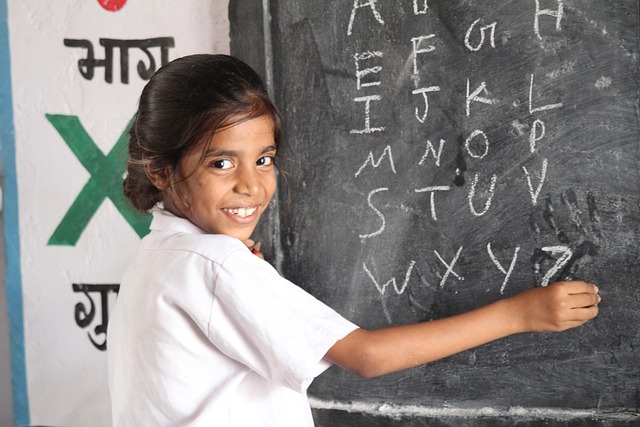高考英语复习完形填空:考点解析议论文4

议论文
三、议论文
【体裁诠释】
议论文是高考完形填空中较难的文章。议论文由三个要素组成:论点、论据、论证。有着较强的说教目的和一定的语言深度。
议论文完形填空的特点:结构清晰、脉络有序。
①有些议论型完形填空的首句常常是文章的主旨句。作者一般在文章的首段提出论点,然后在各段的首句提出分论点。
②还有些议论文先叙述生活中的一件具体的事情或描述生活中的现象,然后根据事情或现象所反映的问题提出自己的论点。然后再用具体的论据去说明自己的论点。
③此外,也有些议论文一开始作者仅仅是列举生活中的现象,而不表明自己的观点,然后通过对具体现象的分析,自然得出一种结论,这种结论往往就是作者的论点。
抓住论点是理解议论文的关键所在。
可以从以下几个角度寻找或概括中心论点:分析论点所在的位置。①题目。有的文章题目本身就是中心论点;②开头。有的文章在开头直接提出中心论点,然后逐层论述;③中间。有的文章在论述过程中提出中心论点,这种情况较少;④结尾。有的文章通过论述,在文章结尾处归纳出全文的中心论点。
论据是论点赖以存在的根据,一般分为事实论据和道理论据。阅读议论文,要学会分析论点与论据的关系、论据在证明论点时所起的作用。事实论据,应该分析作者所提供的事实,从事实中发现道理,再验证它与作者的论点的逻辑关系。道理论据,应该从道理论据出发联系和道理对应的事实,来验证这些道理如何证明论点。
要做好高考完形填空中的议论文,最主要的是要抓住作者议论的中心,也就是要理清文章的论点、论据和论证。
【典例探究】
(2010·广东卷)
Every country has its own culture.
Even though each country uses doors, doors may have_
21
__functions and purposes which lead to ___22__
differences.
When I first came to America, I noticed that a public building had two different__23___ and they had distinct functions. You have to push the door with the word “PUSH” to go out of the building and to pull the door with the word “PULL” to_
24____the building. This was new to me, because we use the ____25__ door in South Korea. For quite a few times I failed to go out of a shopping centre and was embarrassed.
The way of using school bus doors was also ____26__ to me .I used to take the school bus to classes. The school decided that when the driver opened both the front and back doors,
___27
_who were getting off the bus should get off first, and students who were getting on should get on __
28_
. In South Korea, we do not need to wait for people to get off. One morning, I hurried to the bus, and when the bus doors opened, I___ 29____tried to get on the school bus through the front door. All the students around looked at me, I was totally_
30 _
_,and my face went red.
21. A. different
B. important
C. practical
D. unusual
22. A. national
B. embarrassing
C. cultural
D. amazing
23. A. exits
B. entrances
C. signs
D. doors
24. A. enter
B. leave
C. open
D. close
25. A. main
B. same
C. front
D. back
26. A. annoying
B. hard
C. satisfying
D. strange
27. A. parents
B. students
C. teachers
D. drivers
28. A. sooner
B. later
C. faster
D. earlier
29. A. politely
B. patiently
C. unconsciously
D. slowly
30. A. embarrassed
B. annoyed
C. unsatisfied
D. excited
【答案解析】
21. 【解析】选A。考查形容词。从下文的distinct functions,可知是不同功能,A 不同的,B 重要的,C 实践的,D不寻常的。
22. 【解析】选C。考查形容词。从开头总括句“Every country has its own culture.”和下文举例两个门功能不同可以看出。A 国家的,B 尴尬的,C文化的,D惊奇的。
23. 【解析】选C。考查名词。从上下文的---the word “PUSH”---the word“PULL”和two different可知选C。A 出口,B 入口,C标志,D门。
24. 【解析】选A。
考查动词。从上下文push the door with the word “PUSH” to go out of the building and to pull the door with the word“PULL” to_
24____the building相对的动作可知此处意为进入。A 进入,B 离开,C打开,D关闭。
25. 【解析】选B。 考查形容词。由上文When I first came to America, I noticed有两个门, This was new to me, 可暗示出我们在韩国用同一个门,故选B项。
26. 【解析】选D。考查形容词。 由上文第三段知:This was new to me; The way …. was also ____26__ to me .可知这种方式也是奇怪的。A讨厌的, B畏难的, C满意的, D陌生的。
27. 【解析】选B考查名词。 由下文的并列句“students who were getting on ….”可知。
A 父母,B学生,C老师,D司机。
28. 【解析】选B。考查形容词比较级。从上文并列句who were getting off the bus should get off first, ---who were getting on should get on __
28_.可知此处与first相对,故选B项。A 很快,B较晚,C更快,D较早。
29. 【解析】选C。考查副词。从上文In South Korea, we do not need to wait for people to get off.所以作者已经形成了习惯,已经是无意识地做了。A 礼貌地,B耐心地,C无意识地,D慢慢地。
30. 【解析】选A。考查形容词。 从上文For quite a few times I failed to go out of a shopping centre and was embarrassed.和I was totally_
30 _ ,and my face went red.A项,尴尬的;B项,恼怒的;C项,不满意的;D项,兴奋的。
【跟踪演练】
1(2011·江苏省无锡市高三)People do not analyze every problem they meet. Sometimes they try to remember a solution from the last time they had a
36
problem. They often accept the opinions or ideas of other people. Other times they begin to act without
37
; they try to find a solution by trial and error. However, when all of these methods
38
, the person with a problem has to start analyzing. There are six
39
in analyzing a problem.
First the person must recognize that there is a problem. For example, Sam’s bicycle is broken, and he cannot ride it to class as he usually does. Sam must
40
that there is a problem with his bicycle.
Next the person must
41
the problem. Before Sam can repair his bicycle, he must know why it does not work. For example, he must
42
the parts that are wrong.
Now the person must look for
43
that will make the problem clearer and lead to
44 .
solutions. For example, suppose Sam
45
that his bike does not work because there is something wrong with the brakes. At this time, he can look in his bicycle repair book and read about brakes, talk to his friends at the bike shop, or look at his brakes carefully.
After
46
the problem, the person should have
47
suggestions for a possible solution. Take Sam as an example
48
, his suggestions might be: tighten or loosen the brakes, buy new brakes and change the old ones.
In the end, one
49
seems to be the solution
50
the problem. Sometimes the
51
idea comes quite
52
because the thinker suddenly sees something new or sees something in a
53
way. Sam, for example, suddenly sees there is a piece of chewing gum stuck to a brake. He immediately hits on the solution to his problem: he must
54
the brake.
Finally the solution is
55
. Sam does it and finds his bicycle works perfectly. In short, he has solved the problem.
36.A.serious
B.usual
C.similar
D.common
37.A.practising
B.thinking
C.understanding
D.helping
38.A.fail
B.work
C.change
D.develop
39.A.ways
B.conditions
C.stages
D.orders
40.A.explain
B.prove
C.show
D.see
41.A.judge
B.find
C.describe
D.face
42.A.check
B.determine
C.correct
D.recover
43.A.answers
B.skills
C.explanation
D.information
44.A.possible
B.exact
C.real
D.special
45.A.hopes
B.argues
C.decides
D.suggests
46.A.discussing
B.settling down
C.comparing with
D.studying
47.A.exact
B.enough
C.several
D.countless
48.A.once
B.again
C.also
D.alone
49.A.suggestion
B.conclusion
C.decision
D.discovery
50.A.with
B.into
C.for
D.to
51.A.next
B.clear
C.final
D.new
52.A.unexpectedly
B.late
C.clearly
D.often
53.A.simple
B.different
C.quick
D.sudden
54.A.clean
B.separate
C.loosen
D.remove
55.A.recorded
B.completed
C.tested
D.accepted
2、(2010·甘肃省天水一中三模)A high school history teacher once told us, “If you make one close friend in school, you will be most fortunate. A
21
friend is someone who stays with you for life”. 22 teaches that he was right. Good friendship is just not easily
23.
It is possible that we simply do not stay in one place
24 enough for true friendship to develop. However, there can be
25 disagreement on the need for each of us to think carefully about the kind of friendship we want.
To most of us, friendships are considered very important,
26
we need to have it clear in our minds the kinds of friendship we want. Are they to be close or
27
at arm’s length? Do we want to
28 ourselves or do we want to walk on the surface? For some people, many friendships on the surface are
29
enough. And that’s all right. But at some
30
we need to make sure that our expectations are the same as our friends’ expectations. The sharing of personal experience including our tears as well as our dark
31
is the surest way to deepen friendships. But it must
32 slowly and carried on only if there are
33
of interest and action in return.
What are some of the
34
of our friendship? The greatest is to
35
too much too soon. Deep relationships
36
time. Another “major difficulty” is the selfishness to think one “possesses” the other, including his time and attention.
37 , friendships require actions in return. In other words, you must
38
as much as you take. Finally there is a question of taking care of. Unless you spend 39
time together, talking on the phone, writing letters, doing things together, friendships will die
40
.
21. A. true
B. fair-weather
C. school
D. useful
22. A. Knowledge
B. Experience
C. Hardship
D. Schooling
23. A. understood
B. formed
C. realized
D. produced
24. A. certain
B. patiently
C. long
D. fortunately
25. A. some
B. any
C. great
D. no
26. A. but
B. and
C. or
D. while
27. A. remained
B. left
C. kept
D. stayed
28. A. hide
B. deepen
C. strengthen
D. share
29. A. quite
B. not
C. less
D. very
30. A. degree
B. point
C. places
D. length
31. A. clothes
B. clouds
C. dreams
D. letters
32. A. be undertaking
B. have been undertaking
C. have been undertaken
D. be undertaken
33. A. marks
B. signs
C. sciences
D. sights
34. A. disadvantages
B. differences
C. difficulties
D. requirements
35. A. expect
B. pull out
C.command
D. develop
36. A. waste
B. spend
C. kill
D. take
37. A. Similarly
B. Differently









